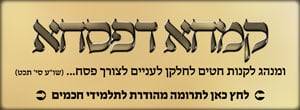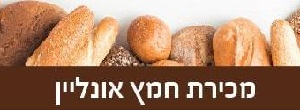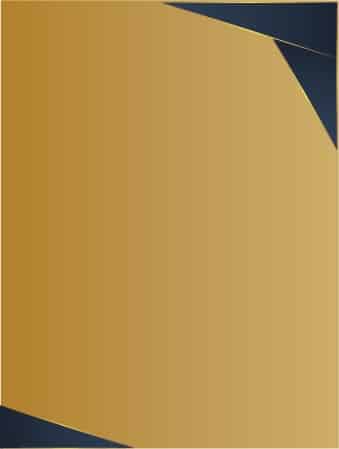The traditional Jewish custom of praying at gravesites of forbearers, righteous people, and the Patriarchs is the topic of this week’s article. Of all the Patriarchs and Matriarchs, Rachel’s Tomb is listed as one of the top ten tourist sites in Israel. Why? Prayer at holy gravesites is known to be more effective than anywhere else. Why is this true? Could prayer be forbidden under the prohibition of loeg larash [mocking the poor] since the deceased cannot pray or learn Torah themselves? Several gravesites such as Kever Rachel, Meron and Rabbi Meir Baal Hanes in Teveria, contain facilities for Torah study. Is it proper to utilize them?
Timing will also be discussed – while the custom is to pray at gravesites on fast days, many visit all year round. Is this a proper practice, or does it cause the “lower powers” – i.e. impurities, to cling to one who visits? Is it proper to pray at a gravesite when one is ritually impure (keri or niddah)?
Lately, many have taken up traveling to Uman for Rosh Hashana or Liszensk on the 21st of Adar. Is one permitted to leave Eretz Yisroel for this pilgrimage? And what about visiting parents’ gravesites – would the money be better off if it was donated to charity?
Of this and more, in the following article.
Prayer at Kever Rachel (Rachel’s Tomb)
This week’s parashah assigns many psukim to the topic of burial – Yaakov’s request to be buried in his forbearer’s gravesite, as well as his explanation why Rachel was not buried alongside the other Patriarchs and Matriarchs. What is the significance of Rachel’s Tomb?
Yaakov, in this week’s parashah, explains to Yosef why he buried his mother on the roadside: “As for me, when I came from Padan, Rachel died on me in the land of Canaan on the way, when there was still a stretch of land to come to Efrat, and I buried her there on the way to Efrat, which is Bethlehem” (Bereshis 48:7).
Rashi explains Yaakov’s proclamation: “And I did not take her even to Bethlehem to bring her into the Land (i.e., into the inhabited region), and I know that you hold it against me; but you should know that I buried her there by Divine command, so that she would be of assistance to her children.”
Rashi, in his explanation of these psukim in Yirmiyahu, quotes a Midrash (Pesikta Rabbati 3): “When Nevuzaradan exiled them, and they passed by there, Rachel emerged from her grave weeping and begging they be shown mercy, as it is said: “A voice is heard on high, lamentation, bitter weeping, Rachel is weeping for her children. And the Holy One, blessed be He, answers her, ‘There is reward for your work,’ says the Lord… ‘and the children shall return to their own border’” (31:15-16).
In merit of Rachel’s roadside burial, she saw their suffering in exile and was able to pray for their return, as Yirmiyahu continues and prophesizes: “I have indeed heard Ephraim complaining, [saying,] ‘You have chastised me, and I was chastised as an ungoaded calf, O lead me back, and I will return… For whenever I speak of him, I still remember him: therefore, My very innards are agitated for him; I will surely have compassion on him,’ says the Lord” (ibid 17-19).
The first mentioning of Rachel burial site as a prayer spot is in Bereshis, when Yosef, Rachel’s son, is led to slavery. Sefer Kav Hayashar (Vayeshev, mentioned in Seder Hadoros) writes: “When the Ishameilis led Yosef to Egypt he prayed at his mother’s gravesite on the way, and she comforted him and encouraged him to continue on the journey.”
The Zohar tells us (Vayishlach, 185a) that Rachel’s gravestone will remain throughout the generations until the prophecy “And the children shall return to their own border” will be realized.
The Zohar expounds on the importance of Rachel’s gravesite in this week’s parashah, Vayechi (225b): “Every day the holy forefathers arouse mercy on Yisroel’s pain, and Hashem does not show the world mercy until their pain is known to the Patriarchs and they beg for mercy. But more than that, Rachel our mother can do, because she is buried at a fork on the road, and whenever the world needs mercy, she arouses mercy on Yisroel.”
The Gra wrote (Tikunei Zohar, Tikun 6:22) that when there are no righteous people in the generation, the Shechinah rests upon kivrei tzadikim (the burial site of righteous individuals), especially at Kever Rachel, where the Shechinah’s main residence is located. The Leshem (Sha’ar Haleshem, part II chapter 11) explains that the anointing of King David took place in Beit Lechem because that is near the Shechinah’s residence, at Rachel’s Tomb.
Prayer at Kivrei Tzadikim
The Gemara (Sota 34b) recounts the details of the first pilgrimage to the Patriarch’s Tombs – that of Kalev ben Yefune when he entered the Holy Land with the mission Moshe Rabbenu had dispatched to tour the land. He went there to pray not to fall into the Spies’ sticky trap of lies about Eretz Yisroel.
In Chazal we find numerous mentions of prayer at kivrei tzadikim and subsequent salvation. The Zohar especially expounds on this topic.
The Zohar (Achrei Mos, 71b) on the pasuk “And I praise the dead who have already died, more than the living who are still alive” (Kohelet 4:2) explains that the nations of the world manipulate their dead with various impure forces, while Yisroel, when they come to their gravesites, are inspired to repent and correct their deeds. As a result, the holy souls ask Hashem to show them mercy and Hashem has mercy on the world in their merit. The Zohar goes even further: “If not for their [the deceaseds’] prayers, the world would not survive even a half of a day.”
Additionally, we find (Sefer Chassidim chapter 450, 430, 1171) that the deceased derive pleasure and elevation of the soul [iluy neshama] when people come to pray and donate charity at their gravesite in their merit. And when they enjoy that kindness, they pray for mercy to be shown to the living in return.
Opposing Prayer at Kivrei Tzaddikim
The Shach (Yore Deah 189:15) notes a dispute regarding a person who obligated himself to pray in the cemetery if he would be saved from a troublesome situation. Rabbenu Chayim Paltiel (Shut Mahram of Rothenberg, chapter 164) writes that Chazal’s allowance of prayer at gravesites is only to ask the deceased for their forgiveness or to pray to Hashem. One is certainly not permitted to speak to the dead. The common folks, however, are unaware of this prohibition, and in stumbling, transgress the sin of “a necromancer [communicating with the dead]” (Devarim 18:11). Therefore, one who took such an oath or made such a promise should annul his vow and not to go to the cemetery. The Bach (Yore Deah 217:51), however, writes that going to the cemetery is a Jewish custom and cancelling it is improper. Nevertheless, one should be careful to not pray or ask any requests of the deceased, only ask Hashem to answer the prayers in merit of the holy people buried there.
Impure Forces
Another reason for refraining from visiting gravesites is the forces of impurity that gravitate towards cemeteries. The Magen Avraham (559:15) and Mishna Brura (559:41) quote the Arizal in writing that aside for a funeral, one should refrain from visiting the cemetery because the impure forces that are present in the cemetery cling to the living when visiting. Therefore, continues the Mishna Brura, it is proper, when visiting gravesites, to stand at a distance of 4 cubits from the graves.
The Chayei Adam (138:5), although permitting visiting the cemetery, warns people to be careful not to visit graves of wicked people.
The Gra, in his famous letter to his family, Igeres Hagra, instructs his wife and descendants to be wary of visiting cemeteries regularly because of those negative forces. This is true especially for women, and many calamities befall those who visit the cemetery regularly. When visiting the cemetery is necessary, one should be careful to wash his hands afterwards.
As for himself, Aliyos Eliyahu (footnote 96) records a story of the Gra who once went to visit his mother’s grave on her yahrzeit. There, he told his brother, “Look how glad mother is to see us.” Several days later he told his brother that he regrets having gone to the cemetery, because while it caused his mother great joy, it caused him pain and suffering. From then on, he never again visited the cemetery.
Rabbi Nissim Karelitz (Chut Shani, Yore Deah 240) commented on this story – while it may have been true for the Gra on his lofty spiritual plane, it is certainly not true for the general public, because cemetery harm for common folks is certainly not as great as the damage that the Gra experienced.
Eretz Yisroel
Rabbi Moshe Sternbuch (Teshuvos V’hanhagos, volume II, chapter 64) quotes the Leshem as saying that kivrei tzadikim outside of Eretz Yisroel have the holiness of Eretz Yisroel. However, the Brisker Rav refrained from visiting gravesites, even outside of Eretz Yisroel. In Eretz Yisroel, however, there is no need to seek kivrei tzadikim for prayer because the entire country is holy. He ends the discussion stating the accepted custom is to visit the holy gravesites of tzadikim, even those in Eretz Yisroel.
The Birkei Yosef (quoted in Sha’arei Teshuva, chapter 568:8) writes that it is even permitted to exit Eretz Yisroel order to visit gravesites of tzadikim. But Rabbi Nissim Karelitz (Chut Shani, Yore Deah 240) ruled that this is true only if this is the only reason for leaving Eretz Yisroel. One who is leaving for a recreational trip but will include kvarim in the itinerary is certainly not included in this leniency. He recounts how the Chazon Ish would scold those who closed their Gemara and traveled to Meron on Lag B’Omer.
Ritual Impurities
The Magen Avraham (559:15) and Chayei Adam (138:5) warn to be particularly careful not to enter the cemetery in a state of ritual impurity such as keri or niddah. This opinion is quoted also in Pischei Teshuva (Yore Deah 195:19); Chamudei Daniel; and Mishna Brura (87:7). Shevet Halevi (Shiurei Niddah 195:17) quotes opinions that permit it in a woman’s Seven Clean Days when necessary. He continues and differentiates between visiting the synagogue and cemetery during niddah: while the custom of refraining from visiting the synagogue is a show of respect to the synagogue, visiting a cemetery involves meeting death – itself a separate impurity — which compounded with niddah results in an extraordinarily damaging concoction. Therefore, unless extenuating circumstances apply, a woman should not visit the cemetery until immersing in the mikveh. Shevet Halevi suggests that if necessary, she can go to the cemetery while maintaining a four-cubit distance from the graves.
Suga Bashoshanim (Vind, chapter 40:6) quotes from a handwritten Sefer authored by the Chida that this precaution should be taken even when visiting kivrei tzaddikim. He notes that customarily, people are very careful not to visit Meron during these times.
Times for Visiting Cemeteries
The Gemara (Taanis 16a) mentions a custom to visit the cemetery on fast days that were declared due to drought. The Shulchan Aruch (Orech Chayim 579:3) and Rama also record the custom to visit the cemetery on the 9th of Av (Orech Chayim 559:10) and Erev Rosh Hashana (Orech Chayim 581:4).
Cemetery Power
The Gemara is split regarding the purpose of visiting cemeteries. One approach sees graves as a catalyst to remind people of death and therefore repentance – sinners are considered ‘as good as dead’ to Hashem. Others opine that in visiting their graves we arouse the deceased to beg Hashem for mercy on the living. The difference in opinion leads to practical differences: if the reason is the first one, there is no difference who is buried in the grave. But if the reason is the second — only Jewish graves should be visited.
The Shulchan Aruch (Orech Chayim 579:3) follows the first reasoning – graves drive home the message clearly – without repentance we may as well be like those dead buried in the graves. Therefore, the Rama rules that where there is no Jewish graveyard, a non-Jewish graveyard will suffice.
This ruling seems to indicate that according to the Rama there is no inherent power in praying at graves, and all the Gemara and Midrashim that praise prayer at kiveri tzaddikim follow the second opinion, one which was not accepted l’halacha.
The Biur Hagra though, is surprised at this ruling. To his opinion, halacha follows the second reasoning (although the Gra does opine that excessive visiting is unadvisable, as clarified above.)
The Magen Avraham (579:11), Mishna Brura (14) and Kaf Hachaim (20) solve this issue stating that the reason for visiting cemeteries is twofold, and therefore there is special value in praying by Jewish graves. They add that on Erev Rosh Hashana and Erev Yom Kippur the purpose of prayer at kivrei tzadikim is only to arouse the deceased pray and beg for mercy on behalf of the living.
The Mishna Brura adds (581:27) that the custom to pray at the resting place of tzaddikim is because prayers are more accepted there.
In conclusion: The Shulchan Aruch seems to opine that the reason for praying at gravesites is in order to inspire penitents. However, the Achronim rule l’halacha that praying at resting places of tzaddikim and forbearers is praiseworthy because they can arouse heavenly mercy. Yet, the Mishna Brura still maintains that one should practice the four-cubit distancing from the graves.
Non-Jewish Graveyards
Mishna Brura writes (579:14) that it is forbidden to pray at non-Jewish graveyards that contain religious symbols and other elements of Avoda Zara. This is true even if the only intention is to inspire repentance. The Kaf Hachayim (Orech Chayim 659:81) writes that visiting non-Jewish graves is dangerous and improper, even where no religious symbols are apparent.
Prayer Format
The Mishna Brura (581: 27) describes how to visit a grave: one should circle the grave, give tzedakah, and then pray to Hashem in merit of the deceased. One should not visit the same grave more than once a day.
Torah Study
Rashi (Yevamos 122a) quotes the Ge’onim: “The day a great man passed away would be commemorated in his honor. On the anniversary of his death, the Torah scholars alongside the common folks would gather, and study Torah at his grave.”
“Mocking the Poor”
Torah study and prayer within the four cubits of a grave is forbidden on the grounds of loeg larash [“mocking the poor”]. Since the deceased can no longer perform mitzvos, performing them in his presence [i.e. his space of four cubits] expresses lack of sensitivity to his situation, and is forbidden. Of tzaddikim, however, we find that they are just as active after death as they were during their lifetime (Berachos 18a-b). The Chida describes (Shem Gedolim 199) Rabbi Yehuda Hanasi who would return home every Friday night and recite the Kiddush for his family. Sefer Chasidim (chapter 1129) explains that “the dead who are free [from mitzvos]” (Tehilim 88:6) does not refer to Rabbi Yehuda Hanasi and his contemporaries. Therefore, Rabbi Yehuda could recite the Kiddush for his family. The Chida adds (Birkei Yosef, Yore Deah 344:7) that Torah study and prayer at a gravesite for adding merit to the deceased is permitted.
The Minchas Elozer writes (volume III chapter 53) that everything done in honor of the deceased is permitted. He adds that perhaps Torah study at Kever Rachel is permitted also because she was a woman and not obligated to study Torah during her lifetime. Similarly, it would be permitted to study Torah in Me’aras Hamachpeila and the gravesites of the Twelve Tribes because they lived before the Torah was given at Sinai. In Meron it would be permitted since the actual grave is in a cave blow the tombstone, while prayer and Torah study take place in the upper chambers (this leniency obviously does not apply when one enters the cave below the main hall).
The Tzitz Eliezer (part 10, chapter 10:6) quotes the Chida and Minchas Elozer, while adding another leniency – the Netziv (Ha’amek She’elia, sheilta 14:6) who suggests that today, since we bury the deceased more than 10 tefachim (handbreadths) below ground, there is no prohibition of loeg larash because the deceased is located in a different domain. He ends, however, that it is better to arrange a separate room for prayer and Torah study outside the actual gravesite.
Gesher Hachayim (part 1, chapter 29:11) writes that Rashbi’s gravesite in Meron and Rabbi Meir Baal Hanes in Tiberius are known to be buried in a cave beneath the tombstone. Therefore, the prayer halls are in a separate space. However, at Kever Rachel, whose grave is situated inside the actual prayer hall, it is proper to pray outside, and one should not rely upon the various leniencies. Indeed, Rabbi Shmuel of Salant zatal, when visiting Kever Rachel, arranged to pray with a minyan outside of her burial site.
Kohanim
The Chochmas Adam (introduction to Sha’arei Tzedek) and Pe’as Hashulchan warn Kohanim to be careful not to desecrate their holiness and rely upon defective leniencies that permit entry to kivrei tzadikim. Today, many sites have made arrangements enabling Kohanim to visit.
Financial Expenditures
The following story is mentioned in Ma’ase Ish (volume III page 72): Rabbi Avraham Kellerman once asked the Chazon Ish if he should travel from Tel Aviv to Kfar Haroeh (a long trip in those days) to visit his father’s gravesite on his yahrzeit. The Chazon Ish answered that for him it would be better to learn Mishnayos in his father’s merit instead of traveling to the cemetery.
Rabbi Shlomo Zalman Auerbach ruled similarly (Halichos Shlomo, Tefilla, chapter 18, footnote 74): while it is a Jewish custom to visit a parent’s gravesite on the day of his yahrzeit, if the visit involves a significant financial expenditure, the money would be better spent if donated to tzedakah, and the time he would have spent traveling should be utilized for Torah study in the parent’s merit.
Summary
Many sources in Chazal and Zohar encourage visiting and praying at kiveri tzadikim and kivrei avos [graves of forbearers]. In addition, giving tzedakah, prayer and Torah study at burial sites brings pleasure to the deceased. Engaging in these activities as a means for generating merit for the deceased is permitted at the actual gravesite. When there are other graves at the same site, they, too, should be included in the dedication of merit.
One should be extra careful to refrain from praying directly to the deceased. Prayer is always directed only to Hashem, and when standing near graves – asking for salvation in merit of those righteous people long gone. Caution should be exercised when reciting various printed prayers of unknown origin, which may contain direct reference to the deceased.
One should limit cemetery visitation because it allows connection with impure powers. Therefore, the Mishna Brura rules that any prayer at a gravesite should be recited while standing at least four cubits away from the actual grave. When one is ritually impure such as keri or niddah, it is preferable to refrain from visiting cemeteries until immersion in a mikvah.
Kohanim must not defile their lineage even at kivrei tzadikim.
Leaving Eretz Yisroel for visiting graves is permitted, provided it is the sole purpose of the trip.
Where the trip to a parent’s cemetery involves great monetary expenditure or lengthy travel time, it is better to spend that time in Torah study and donate the travel cost to charity in merit of the parent. This will certainly give the deceased greater joy than a long, expensive journey to the cemetery.










